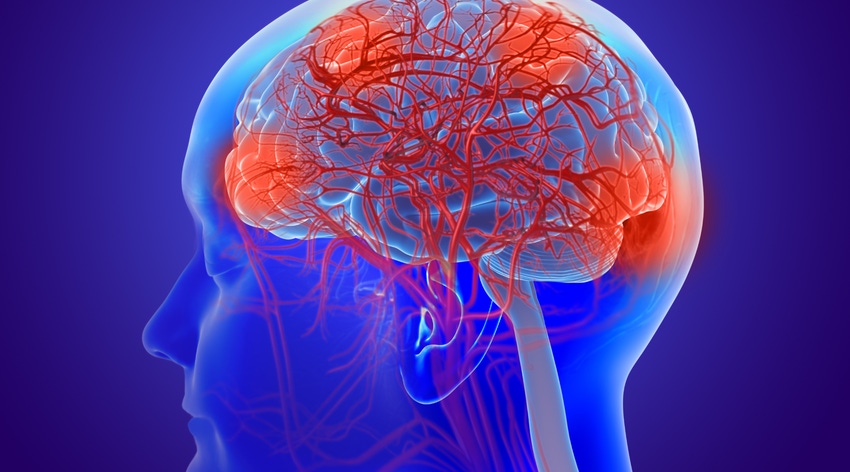Novel Diagnostic Imaging Biomarkers: A Glimmer of Hope in the Fight Against Neurodegenerative Diseases
March 12, 2024

Neurological cognitive diseases are a leading cause of disability and death worldwide, according to the World Health Organization, with Alzheimer’s disease (AD) and Chronic Traumatic Encephalopathy (CTE) being the most common forms of neurodegeneration.
To date, no radiopharmaceutical has been approved by the FDA that can differentiate whether individuals with Mild Cognitive Impairment (MCI) will develop further neurodegeneration. The need, therefore, is a method to predict the likely course of disease development in the early stages when patient management and treatments can be most effective.
“Currently, there are a small number of FDA-approved PET radiopharmaceuticals that are used to study the brain for Alzheimer’s and other neurodegenerative diseases,” says renowned neurosurgeon Dr. Julian Bailes. “The situation is that these PET imaging biomarkers detect either tau proteins or beta-amyloid, but none target both. That’s unfortunate since being able to observe the patterns and densities of both tau and beta-amyloid in the living brains of those suffering MCI could provide tremendous insight into the development of specific neurodegeneration.��”
Diagnostic Tools for Neurodegeneration
For example, Life Molecular Imaging's NeuraCeq and GE Healthcare's Vizamyl are approved to study beta-amyloid plaques but not tau pathology. On the other hand, Eli Lilly's Amyvid and Tauvid have been approved for the study of beta-amyloid plaque and tau pathology, respectively, but not both. Additionally, recent reports note the development of singular target imaging agents focused on pathologic tau tangles.
“The lack of a single FDA-approved radiopharmaceutical to image both beta-amyloid plaques and tau protein aggregates and determine if the patient will progress to further cognitive decline is problematic,” added Dr. Bailes. “This leads to difficulty in early diagnosis and treatment selection, ultimately impacting patient outcomes.”
The good news is that researchers are now working on novel PET biomarkers to help address this problem. One such agent is CereMark Pharma’s investigational new drug F-18 Flornaptitril.
According to CereMark Pharma CEO Henry Chilton, “Previous clinical studies with F-18 Flornaptitril have demonstrated its unique PET imaging abilities to simultaneously detect both beta-amyloid plaques and tau aggregates in a single scan.”
Importance of advancing Diagnostic Imaging for Neurodegeneration
Here’s a look at why the work being done in this area of nuclear medicine is so important.
First, in the US today, estimates show that millions of individuals exhibit MCI, which is likely to signal early neurological disease; therefore, it is critically important to understand whether further cognitive decline is likely to occur. AD and CTE may present with the same early symptoms of memory loss, confusion and personality changes, and both diseases are associated with key pathological neuroproteins, beta-amyloid plaque and tau aggregates.
However, the neurological pathology of AD and CTE differs in that the distribution and uptake of these two proteins occur at different disease stages in different brain regions and densities. AD is primarily associated with the accumulation of beta-amyloid protein plaques in the brain, followed by tau aggregates as neurological deficit worsens. CTE, on the other hand, typically presents as a buildup of tau protein deposits in the early stages of disease development. An understanding of the regional distribution and density of both beta-amyloid plaques and tau protein aggregates in brain regions is critical to understanding the progression of neurodegeneration and effective patient management.
According to Dr. Chilton, research has shown that the ability to image both beta-amyloid plaques and tau protein aggregates in a single PET could provide a higher degree of precision in understanding disease state progression as well as serving as a potential tool for quantity shifts in beta-amyloid plaque brain burden as a measure of efficacy with AD therapy. By providing quantification, localization, anatomical uptake density and progression analysis of these proteins could lead to greater confidence in the decision-making process of how best to manage these life-debilitating diseases.
Bailes suggested that the ability to visualize CTE in the living brain would remove significant barriers to treatment.
“At present, the diagnosis of CTE can only be made after death by examining the brain tissue,” said Dr. Bailes. “This is a significant barrier to the accurate understanding of neurodegeneration and limits our ability as doctors to treat the condition.”
Improved treatment of CTE will not only help amateur athletes and sports professionals but can also benefit many others who may have suffered significant head injuries in their lives, careers or lifestyles. This includes individuals in the military who have gone through basic training and/or combat to experience percussive ‘blast-wave’ brain trauma, individuals with concussive brain injuries as may occur in vehicular accidents, or as in a fall. Providing effective CTE treatment early can help mitigate the long-term effects of the condition and significantly improve the patient’s quality of life.
Final thoughts
For any pathological condition, the goal is to enable the appropriate therapy to be employed early on so that the particular condition can be stopped or slowed to enable individuals to mostly continue their lives as they were. For neurodegeneration involving AD or CTE, a novel diagnostic imaging agent that can depict the density of both beta-amyloid and tau proteins in the living brain holds the greatest potential for such a role in the early analysis of neurodegeneration and treatment.
Currently-approved PET imaging biomarkers can detect only one or the other of the two principal pathological proteins in these diseases but not both in a single scan, thus limiting the effectiveness of this approach. However, with new developments on the horizon, doctors and researchers can more effectively predict the development of these diseases in their early stages and improve patient management throughout the course of the occurrence of two very significant life-debilitating neurological diseases.
About the Author(s)
You May Also Like

.png?width=300&auto=webp&quality=80&disable=upscale)
